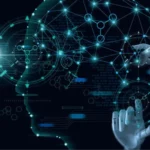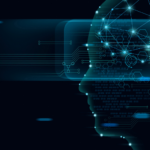
Introduction:
- An introduction to the changing complexion of cyber threats (increases in data breaches, ransomware attacks, and hacker capabilities).
- Unveil AI-Powered Cybersecurity as the new wave of defense against these new-age threats with real-time analysis and instant response capabilities.
What is AI-Powered Cybersecurity?
Artificial Intelligence (AI) in the field of information security, AI-powered cybersecurity refers to the incorporation of AI and machine learning into security systems to identify, analyze, and respond to cyber threats.
Discuss how Artificial Intelligence can automatically detect threats by analyzing huge troves of data, spotting patterns, and even predicting future risks more quickly than older processes.
Advantages of Using AI in Cybersecurity:
- Real-Time Threat Detection: AI can monitor systems and networks in real-time, detecting odd behaviors and anomalies as they occur to take action before attacks cause harm.
- Predictive Threat Intelligence: AI can predict future cyber threats by digesting past patterns, making it easy for organizations to reinforce treatments in advance.
- Automated Incident Response: AI can rapidly identify and autonomously respond to critical security incidents, securing the network by isolating threat vectors before they cause damage, reducing meantime-to-repair.
- Advanced Malware Detection: With AI’s capability to identify new and emerging types of malware, firms are made more secure against zero-day attacks.
Emerging Cyber Threats and Defense via AI:
Madding AI can identify malicious data packets based on incoming data behavior, telling a bit more about how the AI works better than just saying it takes phishing emails and ransomware threats.
- IoT and Cloud Security: In the era of famous IoT devices and cloud storage, AI keeps track of colossal data amounts to detect weaknesses within connected networks or secure them in cloud infrastructures.
- Insider Threats: Monitoring employee activity with AI can also help discover insider threats, such as suspicious behavior that could imply an internal violation.
Problems in Cybersecurity AI:
Overcoming the cost and complexity of deploying AI-enabled security systems, as well as the risk that AI could be manipulated by cybercriminals. Specify the need for human expertise to accompany AI systems to accurately interpret and respond to alerts produced by AI.
Summary on the Future of AI in Cybersecurity:
- The future of security: examine breakthroughs, including AI-driven autonomous security systems, that could deliver more passive defense down the road.
- Talk about ongoing R&D (such as quantum encryption), which will complement AI in cybersecurity.
Conclusion:
- Highlight the vital constitutional duty of AI to deliver businesses and individuals from brand-new types of cyber threats.
- Invite readers to investigate AI-enabled cybersecurity tools in conjunction with an all-encompassing strategy for combating the growing ranks of cybercriminals.




